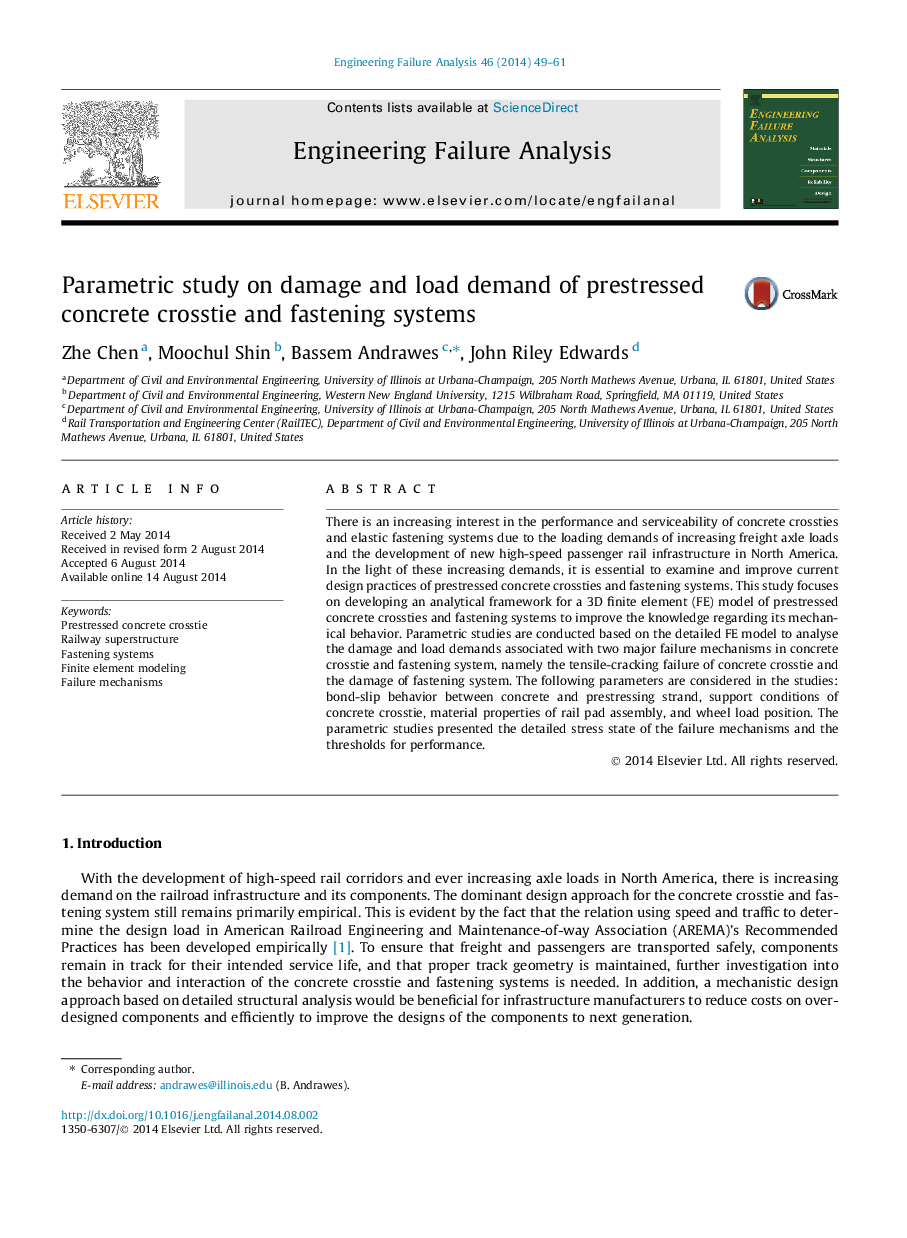| Article ID | Journal | Published Year | Pages | File Type |
|---|---|---|---|---|
| 773735 | Engineering Failure Analysis | 2014 | 13 Pages |
•Field-validated finite-element model of concrete crosstie and fastening system was proposed.•Detailed fastening system (FS) was included in the finite-element model.•Bond-slip threshold for prestressed steel at rail seat region was determined.•Wheel load location on rail head has considerable effect on the FS damage.
There is an increasing interest in the performance and serviceability of concrete crossties and elastic fastening systems due to the loading demands of increasing freight axle loads and the development of new high-speed passenger rail infrastructure in North America. In the light of these increasing demands, it is essential to examine and improve current design practices of prestressed concrete crossties and fastening systems. This study focuses on developing an analytical framework for a 3D finite element (FE) model of prestressed concrete crossties and fastening systems to improve the knowledge regarding its mechanical behavior. Parametric studies are conducted based on the detailed FE model to analyse the damage and load demands associated with two major failure mechanisms in concrete crosstie and fastening system, namely the tensile-cracking failure of concrete crosstie and the damage of fastening system. The following parameters are considered in the studies: bond-slip behavior between concrete and prestressing strand, support conditions of concrete crosstie, material properties of rail pad assembly, and wheel load position. The parametric studies presented the detailed stress state of the failure mechanisms and the thresholds for performance.
